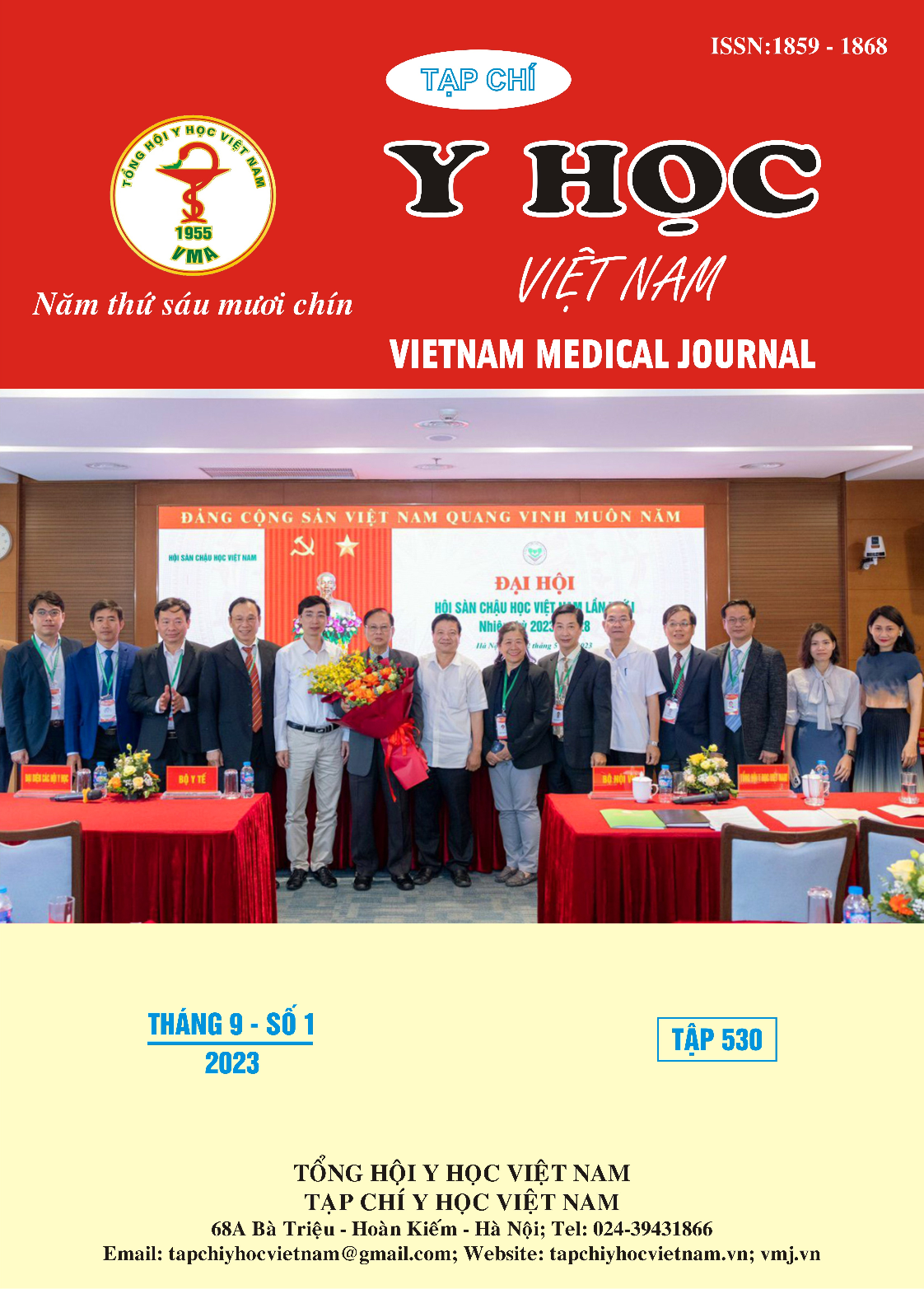ETIOLOGY MICROBIOLOGY OF PERITONITIS IN CONTINUOUS AMBULATORY PERITONEAL DIALYSIS PATIENTS IN E HOPITAL
Main Article Content
Abstract
A cross-sectional descriptive study the microbiological etiology of peritonitis in 27 CAPD patients at the Nephro-Urology Department in E Hospital during August 2020 to August 2021. Results: The average age was 42.6 ± 12,5 (16-82 years old). Male/Female ratio is 1,25/1. With 36 episodes of peritonitis, positive rate of Dialysate of peritoneal dialysis put in blood culture bottle that was cultured in the aerobic, the anaerobic and the agar 58.3%, 38.9% and 33.3%. All positive samples appeared in the aerobic bottles. Rate of Gram-positive bacteria is 24% (of which 50% is Staphylococcus), Gram-negative bacteria is 64% (of which 40% is E.coli) and 12% (of which 100% is Candida). Conclusions: The common microbiological agents causes of etiology of peritonitis in CAPD patients are the Gram-negative bacteria (64%, mainly E.coli 40%), the Gram-positive bacteria (24%) and Candida (12%).
Article Details
Keywords
Peritonitis, Continuous Ambulatory Peritoneal Dialysis (CAPD).
References
2. Chinnock B, Fox C, Hendey GW (2009). Gram's stain of peritoneal fluid is rarely helpful in the evaluation of the ascites patient. Annals of emergency medicine, 54(1), 78-82.
3. Yoon SH, Choi NW, Yun SR (2010). Detecting bacterial growth in continuous ambulatory peritoneal dialysis effluent using two culture methods. The Korean journal of internal medicine, 25(1), 82-5.
4. Zafer M, Tekin T, Özlem B, et al. (2015). Comparison of classical methods versus bactec blood culture system for culture of normally sterile body fluids. 4.
5. Omer I, Hummeida MA, Musa HA (2011). Improved conventional method for the laboratory diagnosis of peritonitis from peritoneal dialysate in Sudan. Peritoneal dialysis international : journal of the International Society for Peritoneal Dialysis, 31(4), 495-8.
6. Najafi I, Ossareh S, Hosseini M, et al. (2011). Epidemiology of culture-negative peritonitis in Iranian patients on continuous ambulatory peritoneal dialysis. Iranian journal of kidney diseases, 5(5), 332-7.
7. Tantiyavarong P, Traitanon O, Chuengsaman P, et al. (2016). Dialysate White Blood Cell Change after Initial Antibiotic Treatment Represented the Patterns of Response in Peritoneal Dialysis-Related Peritonitis. International journal of nephrology, 2016, 6217135.
8. Feng X, Yang X, Yi C, et al. (2014). Escherichia coli Peritonitis in peritoneal dialysis: the prevalence, antibiotic resistance and clinical outcomes in a South China dialysis center. Peritoneal dialysis international : journal of the International Society for Peritoneal Dialysis, 34(3), 308-16.
9. Chavada R, Kok J, van Hal S, et al. (2011). Seeking clarity within cloudy effluents: differentiating fungal from bacterial peritonitis in peritoneal dialysis patients. PloS one, 6(12), e28247.


